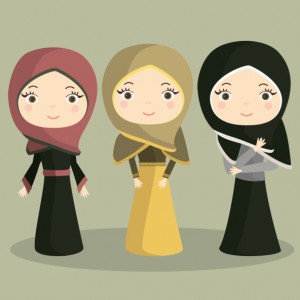
Children of the ‘80s will remember the controversy when Madonna used religious imagery in her videos and music. In 1998, she upset the Hindu community when she wore markings during her performance from their culture. In today’s culture, Lady Gaga and Miley Cyrus are using religious symbols to make a fashion statement. It should be no surprise that religion crosses over into fashion, but two companies have recently made headlines for their products.
Jewish Attire
H&M, a Stockholm-based fashion company, came out with a beautiful beige scarf with black stripes for sale. Unfortunately, this scarf closely resembled the tallit, a Jewish prayer shawl worn by Orthodox men while they’re saying prayer. After social media outrage, the company apologized and removed the garment from its Israeli stores. Old Navy had a similar prayer shawl in its collection last summer. Jean Paul Gaultier endured a great deal of scrutiny over his “Chic Rabbis” collection from the 1990s, but the collection was elegant and beautiful.
Designers Embrace the Hijab
The Italian fashion house Dolce & Gabbana launched its spring collection of fashionable hijabs and abayas this season. The items will primarily be marketed in Europe and the Middle East. Ethnic markets are growing in the fashion industry, and Dolce & Gabbana is wise to reach out to the market. Critics worry that it could be exploiting the cultural heritage of Muslim women. Each of the outfits is offered with matching accessories, which creates a fashionable statement for women who have never had a major designer take notice of their attire.
Dolce & Gabbana regularly draw inspiration from the Catholic faith. Many of its collections have been associated with churches and stained-glass windows or symbols of angels and saints. Its color palette from a recent collection was that of the medieval church and monarchy. Its clothes are known for their beauty and sophistication, and the spring collection of hijabs and abayas is no different.
Turbans and Fashion
Turbans are historically associated with Middle Eastern culture. Wearing one is a strong statement in today’s environment. In the days of Holly glamour in the 1920s and ‘30s, many women wore a turban as a sign of being educated and worldly. Turbans have gone up and down in the fashion world. They might be out currently, but that hasn’t stopped the fashionistas from wearing them. Because they are a symbol of religion, does this mean that women should stop wearing them?
What’s the Attraction?
It’s not fashionistas who take notice of religious symbols. Most people are fascinated with symbols of different cultures. Because many people use their clothes as a way of expression, these symbols are often used to communicate who we are. The problem comes in when someone gets insulted and assumes that it might be cultural racism, when it might just be part of someone’s background and not related to religion at all.
A few years back, rosary beads became quite popular as a fashion item when stars began wearing them as necklaces. The Catholic Church came out strongly against this practice because of the heritage of the beads. Originally, those who could not read used a rosary to help them remember the life of Jesus and the Lord’s Prayer. Instead of banning the use of rosaries in fashion, the Church used the opportunity to explain how to use the beads and share its faith.
The cross has long been popular in jewelry, even to those without faith. There’s a fine line between self-expression and trivializing religion. It’s true that you can’t please everyone, but you should be respectful to those around you. If your grandma is appalled that you wear a cross when you’ve admitted to her you don’t believe in God, maybe it would be best to leave it home when you visit her. Be aware of what you’re saying with your clothes and accessories, and appreciate the heritage behind some of the most holy symbols of faith.

